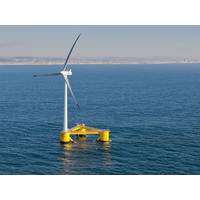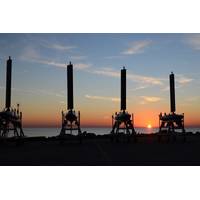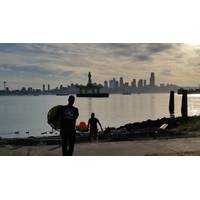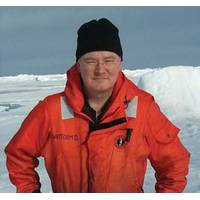
Floating Wind Power Gains Traction But Can It Set Sail?
by 2030. Several countries in Europe have also set targets such as Spain which is seeking up to 3 GW of floating capacity by 2030. PORTS AND SHIPS Floating offshore wind farms are made up of huge turbines installed on floating platforms anchored to the seabed with flexible anchors, chains or steel cables. But at the moment, there are at least 50 designs under development, so narrowing down the concepts is important for standardization and enabling mass production, experts say. They believe that can be achieved, as many oil companies have significant expertise operating in deep waters such

Autonomy: Sun, Sail & Subsea – Not a Holiday, but a Hybrid UxV Platform
.They’ve also learned to simplify as much as they can. “We utilise a dual-element wing on the sail that had probably 20 feet of cable that wrapped around numerous pulley systems and when you start putting these out for long endurance missions, we would start to see these smaller stainless steel cables either bust or break at certain points,” explains Cousino. “So we focused on creating a ruggedized vehicle for long-endurance missions, where we went to a single element wing that has 77 fewer parts and tried to simplify the engineering as much as possible to allow for persistent operations

Salvors Remove Debris Left by Environmental Protesters
as the endangerment of recreational divers ensued as the barge rose and fell with the tides, causing the steel mooring cables to sweep the area underneath, GUE explained. Teams working off DSV Prudhoe Bay performed the cleanup on June 15, recovering and disposing of all concrete blocks and steel cables used at the site. Teams of GUE Seattle SCUBA divers entered the water to locate the debris field, attaching mooring lines and buoys so commercial salvors could easily locate and remove the debris. Global Diving & Salvage’s commercial dive team deployed surface-supplied

Adventure Under Ice
to observe the under-ice world as never before and as close to firsthand as is presently possible. Nereid’s lightweight expendable tether enables it to have horizontal and vertical mobility that is not possible with conventional steel armored tethers, mostly used until now. These far heavier steel cables severely limit horizontal mobility and restrict a vehicle’s depth range to about 7,000 meters. Beyond that length, McFarland says, the steel breaks under its own weight. “The fiber optic system is based on the one we developed for Nereus, but the world below the ice presents some


 February 2024
February 2024





